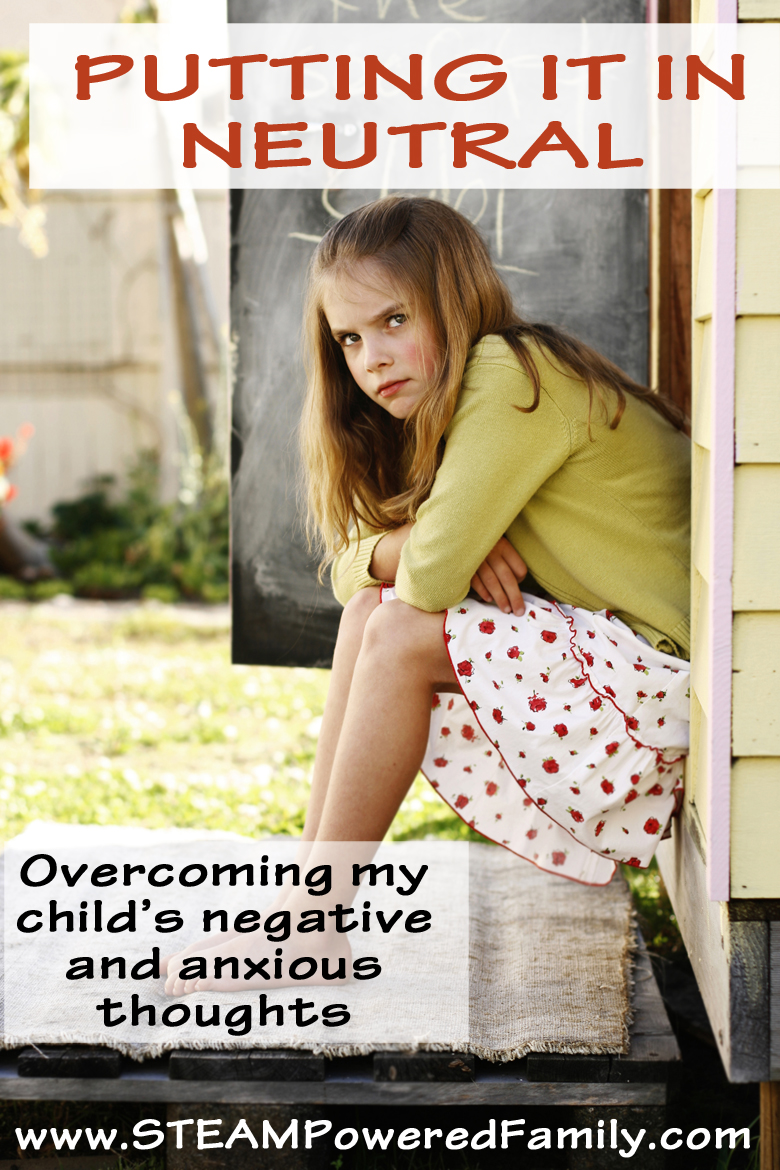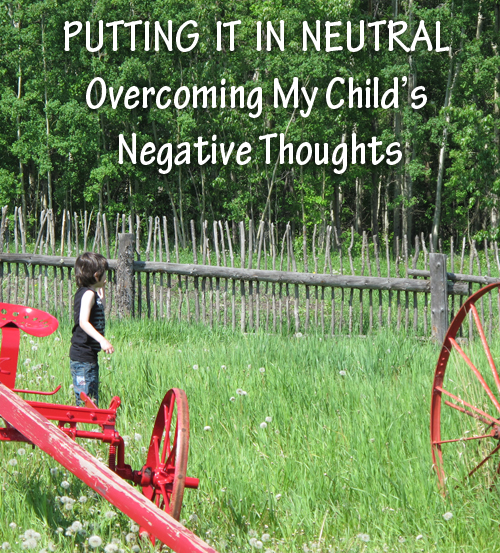Putting It In Neutral
Earlier this week we saw Inside Out, which this brain loving Mama really loved! One of the things that stuck with me from the movie was the importance of encouraging your kids to embrace neutral thoughts. This concept is also something we have been exploring in therapy and I think it is a powerful tool for parents of children struggling with anxiety and negative thoughts.

Negative thoughts are abounding.
You plaster on a smile and take your child off to the side where you ask them to please think positively and can they just be happy for everyone else, so the whole family can have a nice day?
Maybe it works, maybe it doesn’t. Maybe they do fake a smile and you have your nice family day, or maybe they continue to sulk and scowl throughout the whole experience.
Riley from the movie had this exact thing happen. Her mother asked her to be positive and happy for her father, which is not at all how she felt inside.
With the best of intentions her mother asked her to be untrue to herself. To fake it and hide her truths. She made it uncomfortable for her to be honest.
Due to Jackson’s anxiety disorder we deal with the scenario above all the time. He enters a state where he just wants to get out and has a hard time relaxing and enjoying new experiences. Negative thoughts consume him. The thing is, we know this is the anxiety, so, like Riley’s mom, I was encouraging him to fake it for the benefit of the rest of the family and to “think positive”, even when his brain was spewing out anything but positivity. I was teaching him to be untrue to himself.
So we have a new approach now. We focus on neutral thoughts that let him honour his truths. The simple way to do this is ask questions about a situation, think of alternatives, and draw the attention to what the child can do and their options. The goal is to encourage the child to review the situation objectively and consider the possibilities.
By focusing on neutral thoughts and problem solving, you help to keep the child functioning and engaged without minimizing their feelings. You are teaching them to see the reality of the situation, not how they wish things could be or how the anxiety is colouring the experience.
When learning a new skill, Jackson’s anxiety floods his brain with negative thoughts such as: I suck at this. Everyone is going to laugh at me. I’m going to get hurt. It’s too hard. I’m horrible.
We want to counter that by bringing in possibilities, facts and problem solving neutral thoughts.
Yes, learning a new skill is hard, but it can be achieved by: practice, good teachers, the right equipment, time, breaking it down into small steps, etc. Then we engage him by having him brainstorm options and possibilities. Maybe he needs to take a break. Maybe he needs a different teacher. Maybe he needs to try a different piece of equipment. Maybe he needs to watch other people do it for a while before he tries. Maybe he doesn’t understand a fundamental piece of information because a term was used that he doesn’t know. Maybe the room is too loud and ear plugs would help.
This is not a quick fix but a way to reframe reality that will help Jackson throughout his life. When things get hard or an emergency happens, instead of panic and anxiety, I’m hoping he will be able to stay objective and neutral. To find an effective way to get through a situation successfully by being a problem solver and critical thinker. It starts with mastering these moments of negativity.
How do you combat negative thoughts? Have you ever tried using a neutral thought approach?


